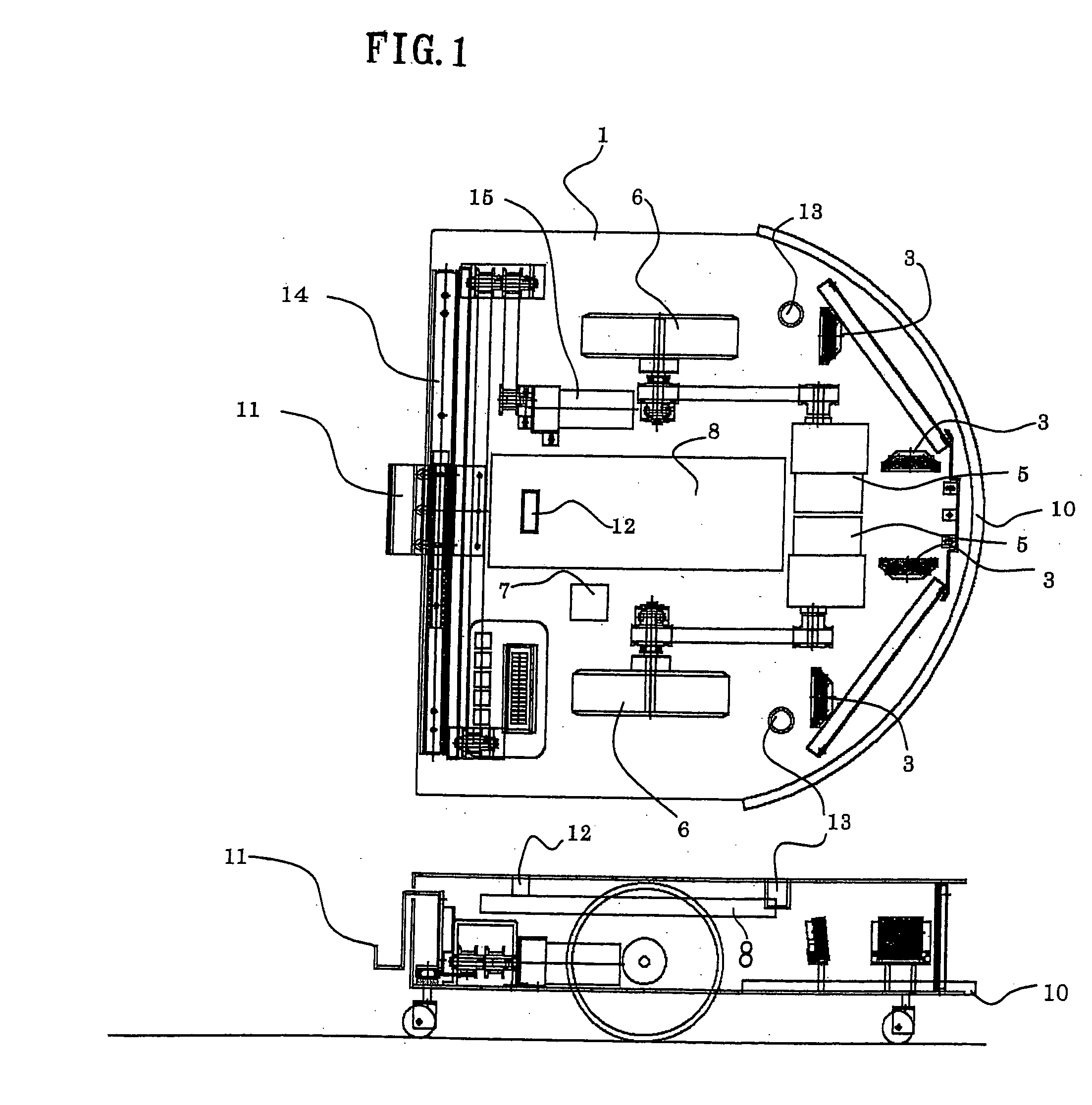Self-propelled working robot
a self-propelled, robot technology, applied in the direction of process and machine control, instruments, carpet cleaners, etc., can solve the problems of user inability to easily replace the working part with a different type of working part, use, and relatively heavy weigh
- Summary
- Abstract
- Description
- Claims
- Application Information
AI Technical Summary
Benefits of technology
Problems solved by technology
Method used
Image
Examples
first embodiment
[0051] Referring to appended figures, a first embodiment of the present invention will be described below.
[0052] A working robot of this embodiment has a traveling assembly 1 shown in FIG. 1 as a common configuration and is used after selectively mounting one of various working assemblies on the traveling assembly 1. This first embodiment is described by taking an example where a liquid applying assembly 20 is mounted as a first working assembly.
[0053] As shown in FIG. 1, a working robot according to the present invention has the traveling assembly 1 shaped like a carriage that travels automatically on the floor. A pair of wheels 6 are provided, each on the right and left sides of the traveling assembly 1. The wheels 6 are driven by driving motors 5. The rotational speed of the driving motors 5 is controlled by a control part 8.
[0054] As shown in FIG. 2, the liquid applying assembly 20 has a top unit 21 and a side unit 22. Each of the units 21 and 22 is configured so that they ca...
second embodiment
[0090]FIG. 6 and FIG. 7 show the state where a sucking and cleaning assembly 50, as the second working assembly, is applied on the traveling assembly 1, in place of the liquid applying assembly (the first work assembly) 20. FIG. 8 is a plan view from above, showing the state the sucking and cleaning assembly 50 is mounted on the traveling assembly 1.
[0091] Second Working Assembly:
[0092] The sucking and cleaning assembly 50 is a work assembly which sucks dusts on a flat hard floor or a carpeted floor to clean the floor (an example of the second work). The sucking and cleaning assembly 50 has a top unit 50 and a side unit 51. The top unit 50 is a part relatively heavy in weight, including such elements as a dust storage part (a tank) 52, a blower motor 54, a filter 53, a battery 55 and a first control board 56, which need not be placed near the floor. The side unit 59 has a suction port 59a which is located near the floor and which sucks dusts on the floor.
[0093] The method of atta...
PUM
 Login to View More
Login to View More Abstract
Description
Claims
Application Information
 Login to View More
Login to View More - R&D
- Intellectual Property
- Life Sciences
- Materials
- Tech Scout
- Unparalleled Data Quality
- Higher Quality Content
- 60% Fewer Hallucinations
Browse by: Latest US Patents, China's latest patents, Technical Efficacy Thesaurus, Application Domain, Technology Topic, Popular Technical Reports.
© 2025 PatSnap. All rights reserved.Legal|Privacy policy|Modern Slavery Act Transparency Statement|Sitemap|About US| Contact US: help@patsnap.com



